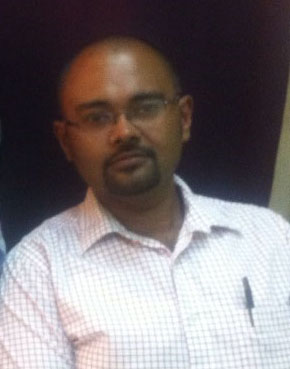The Cancer Institute of Guyana has treated several patients with Non-Hodgkin Lymphoma and according to its Medi-cal Director and Consultant Onco-logist, Dr Sayan Chakraborty many of the patients are still alive.
“Yes I have treated quite a few patients, presently I have one patient who is under treatment. Most of the persons I have treated for Non-Hodgkin Lymphoma they are still coming for follow up, that means they have survived,” Dr. Chakraborty told Sunday Stabroek when contacted.
Asked if there were patients who died, the doctor said: “Yes there are one or two patients who haven’t survived because when they came they had large tumours….”
He said he has treated very young patients who are in their twenties and thirties as well also older patients in their fifties and sixties.
President David Granger was recently diagnosed with Non-Hodgkin Lymphoma and he is presently in the Centro de Investigaciones Medico Quirurgicas (CIMEQ) in Cuba and is expected to commence chemotherapy treatment.
Non-Hodgkin’s lymphoma is more common than the other general type of lymphoma — Hodgkin lymphoma. Many different subtypes of Non-Hodgkin Lymphoma exists. Diffuse large B-cell lymphoma and follicular lymphoma are among the most common subtypes.
Advances in diagnosis and treatment of Non-Hodgkin’s lymphoma have helped improve the prognosis for people with this disease.
But while Dr. Chakraborty confirms that he has treated such patients he could not give the prevalence rate of the disease in Guyana. He pointed out that some of the patients would be diagnosed at the Georgetown Public Hospital Corporation’s (GPHC’s) oncology department and they would opt to have the free chemotherapy there instead of at the institute. Also some of those who are diagnosed at the institute would prefer to go to the GPHC for the chemotherapy.
As a result he said the institute would not have accurate figures without those from the hospital to give a true picture of the prevalence of the cancer in Guyana. All of the patients will eventually have to go to the institute for radiotherapy as that is the only facility which administers such treatment.
Dr. Chakraborty noted that lymphoma is a cancer which originates from the white blood cells and the lymphatic tissues and he noted that the lymph fluid in the body is rich in white blood cells and it travels through the lymph tissues. This is done through channels similar to blood veins with lymph nodes in between. Consequently any malignancy involved in this process is called a lymphoma and this can be broadly classified into Hodgkin Lymphoma and Non Hodgkin Lymphoma even though there are other classifications.
He said that Non-Hodgkin is a bit more serious than Hodgkin and chances of it spreading outside of the lymphatic tissues are higher. He explained that while Hodgkin lymphoma can spread to other areas it is the Non-Hodgkin that can spread to organs such as the lungs and liver.
As to the signs and symptoms of the cancer the Medical Director said these will be dependent on which part of the body the cancer is in. He said if for example the neck is affected then there would be some swelling in the neck area. Swelling would also be seen under the arms or in the groin area if those are the lymph nodes that are affected. But if for example it has to do with the lymph nodes in the area between the chest and the lungs – the mediastinum – then the patient would have difficulty in breathing and coughing.
“The other side effects will be weight loss, nightly sweats, loss of appetite, there can be fever…these are all signs and symptoms of the disease. But it is not that anybody who comes with a fever or a nightly sweat I would diagnose them with lymphoma Hodgkin or Non-Hodgkin,” the doctor said.
However, he said coupled with these if there is swelling his suspicion would be that it might be a lymphoma and the next step would be to diagnose which would include ascertaining which part of the body is affected. Knowing which part of the body is affected will also indicate the stage of the cancer. A biopsy would also have to be done to understand what type it is and bone marrow biopsies are also done. The specimen will also be sent for further genetic profiling to inform the sort of treatment that should be administered.
It is after all of this is done then the doctor would move to the treatment stage and Dr. Chakraborty said depending on the stage of the cancer the treatment can include chemotherapy as well as radiotherapy.
“Usually first a few cycles of chemotherapy is given,…type of chemotherapy … given depends on what I find. That means the doctor would choose the type of chemotherapy depending on the biopsy report, depending on the patient’s tolerance. There are multiple factors to be considered,” he said.
After the cycles of the chemotherapy are completed there is a process called involved field radiation therapy and this would target the lymph nodes that are mostly affected.





